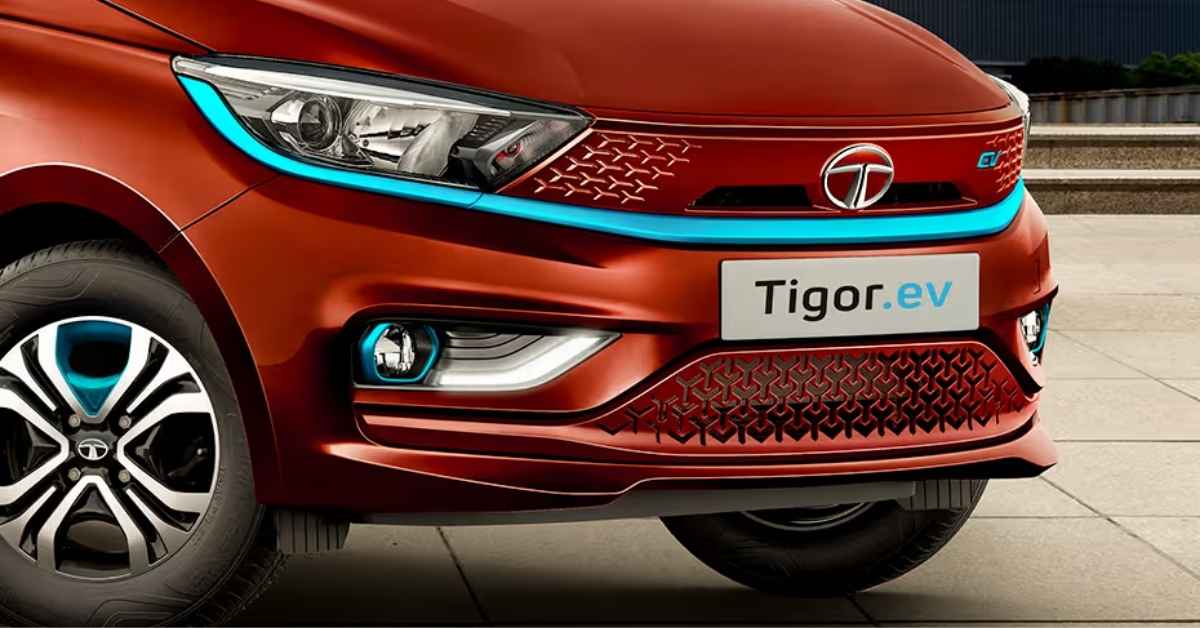Table of Contents
When the monsoon hits the streets, it fills the potholes., Indian car owners always ask the same question “Can my car handle this?” Especially for Tata Tigor EV owners, the concern feels even bigger as It’s electric so how does it cope with heavy rain and waterlogged roads? After all, no one wants to risk their EV in flood-like conditions. Let’s break it down.
What does Tata Tigor EV claim?
Battery & Powertrain
- 26 kWh liquid-cooled ZipTron battery, IP67 rated sealed against dust and immersed water
- Electric motor: 55 kW (74 PS), 170 Nm torque
Range & Efficiency
- ARAI-certified range of -315 km
- Real‑world users report -190-220 km per charge in city driving
Charging
- DC fast charge (25 kW): -0–80% in -60 min
- AC home charger (3.3 kW): -9–9.5 h full charge
- Supports 7.2 kW AC walls and fast charging via CCS‑II port
First things first the Tata Tigor EV has been designed keeping Indian conditions in mind. That includes our unpredictable monsoons. The car’s battery pack and electric motor are sealed and come with an IP67 rating. In simpler terms? It means these components are dustproof and can handle being submerged in water up to a certain depth (usually about a meter) for a short period without damage.
So, if you find yourself crossing patches of waterlogged streets, say water levels just above the tyre or slightly higher, the Tata Tigor EV’s critical parts are protected.
Real-World Experience:Tata Tigor EV Owners Speak
We are a family of 3 and wanted a small city car. The main purpose of the car was to enable city commutes with our 1-year-old and occasional trips around the city. I did not want to pay anything over 10L as an expensive and/or bigger car just for city use did not make sense to me. This comes after 4 years of Tata Harrier ownership. Also, I did not want to go for a manual. I was inclined towards Tata products because I have had a major accident with the Harrier and the way it performed and saved us was something I can never be thankful enough for.
The Options:
It majorly boiled down to 2 options (both of which were slightly higher than my budget)
- Tata Altroz DCA
- Tiago AMT
- Tiago EV
There was a third option Nexon EV, which we loved. However, we loved the concept of the Harrier EV more, so we reduced our budget for the current car to make room for the Harrier/Safari EV purchase in the near future. Making the current car our city/errand car and the SUV more of an intercity car.
The Decision:
I liked the concept of an EV. Since the first launch, I have been following the progress and current scenario of the EV infrastructure. Needless to say, it did not give me a lot of confidence, especially for drives outside of the city. However, once I arranged a test drive for the Tata Tigor EV, I immediately fell in love. The interiors were way better than the first-generation Harrier (which was surprising). The quiet cabin with a decent sound system was extremely pleasant. It included all the tech that you might need on a day-to-day basis.
The decision was clear – at almost the same price, the Tiago EV felt more like the car I needed compared to the Altroz. Tiago AMT was also considered, and it would have cost about 3L less, but I went ahead with.
Conclusion
The Tata Tigor EV’s engineering and safety features make it capable of handling typical monsoon conditions, including the occasional waterlogged stretch. But like with any vehicle, extreme flooding is always risky, and caution is key.
If you want an EV that’s ready for Indian rains without breaking the bank, the Tata Tigor EV definitely deserves a spot on your list.
Read also- Hyundai Kona EV 2025 Review: Still India’s Smartest EV Under ₹25 Lakh?

Hi I’m Aastha Khade passionate about EV cars and bikes. I love sharing simple and honest reviews to help people understand electric vehicles better. I care about clean energy and want to protect the environment for the future.

1 thought on “Monsoon vs Tata Tigor EV 2025: Can This Electric Sedan Handle the Floods?”